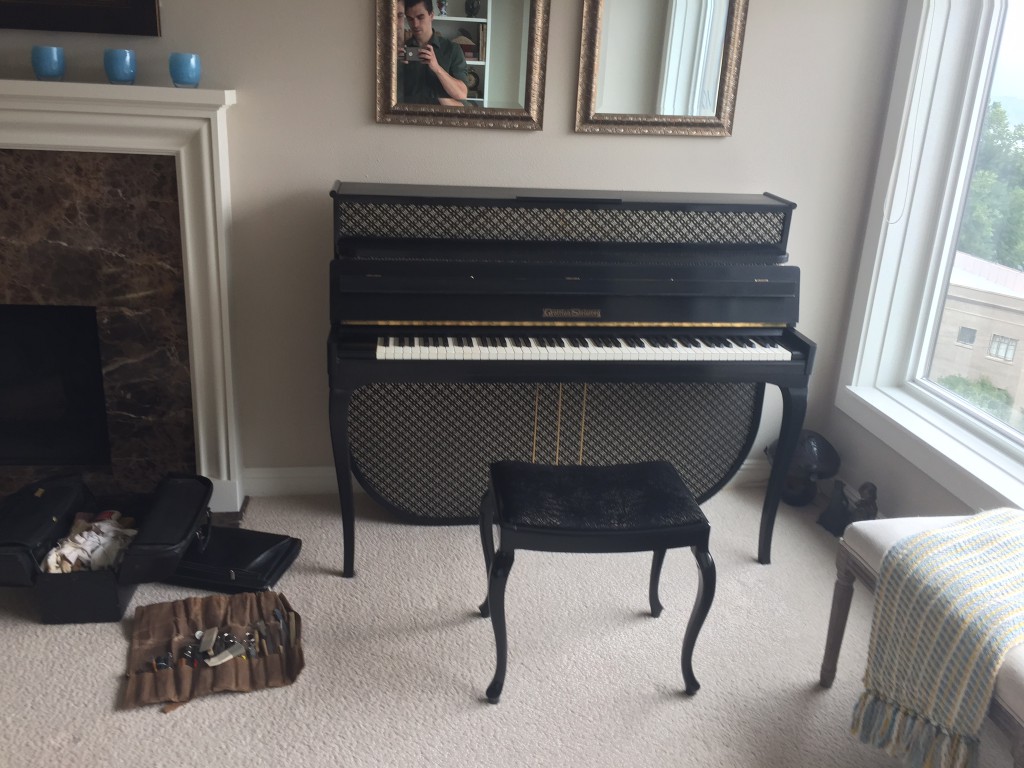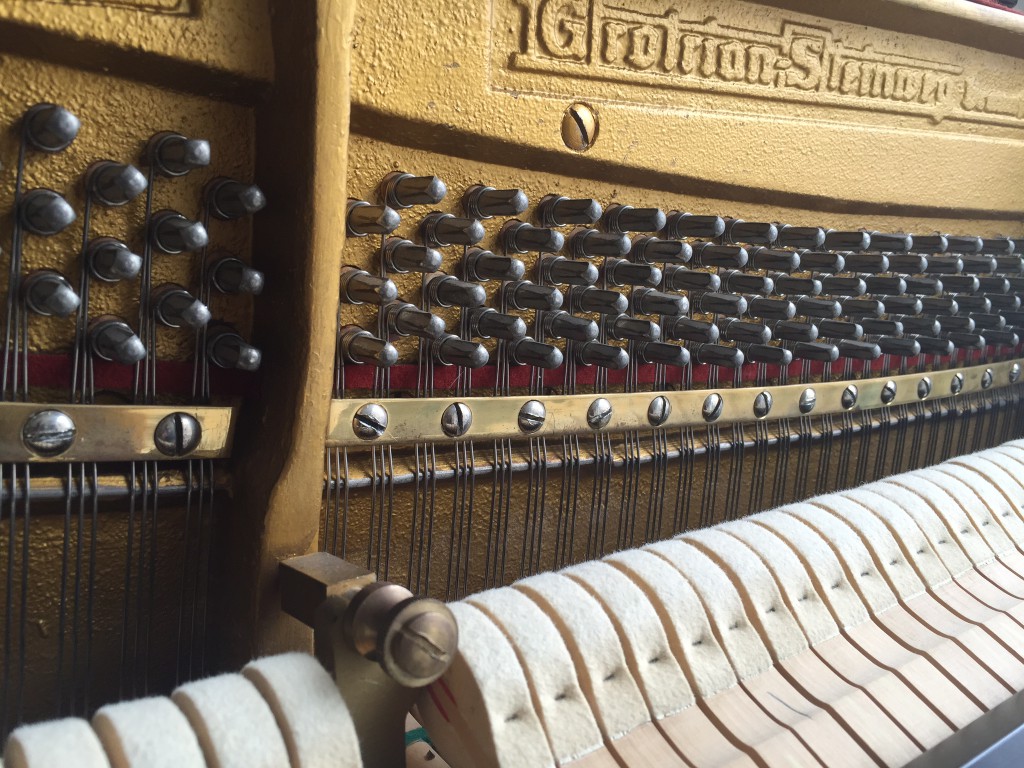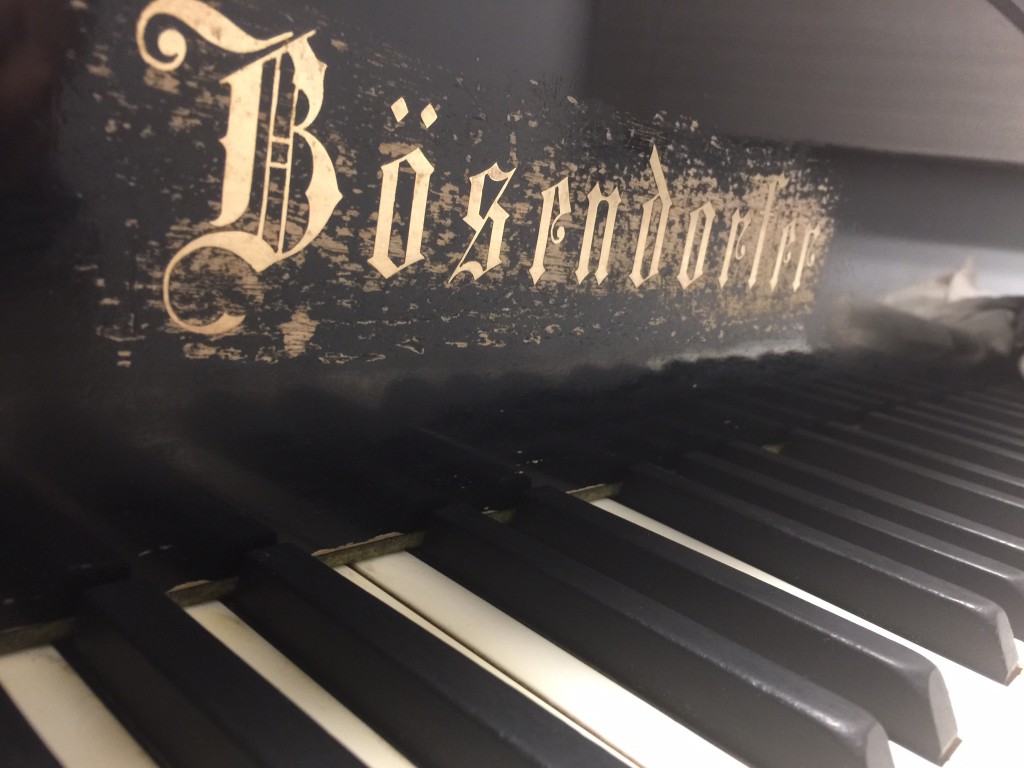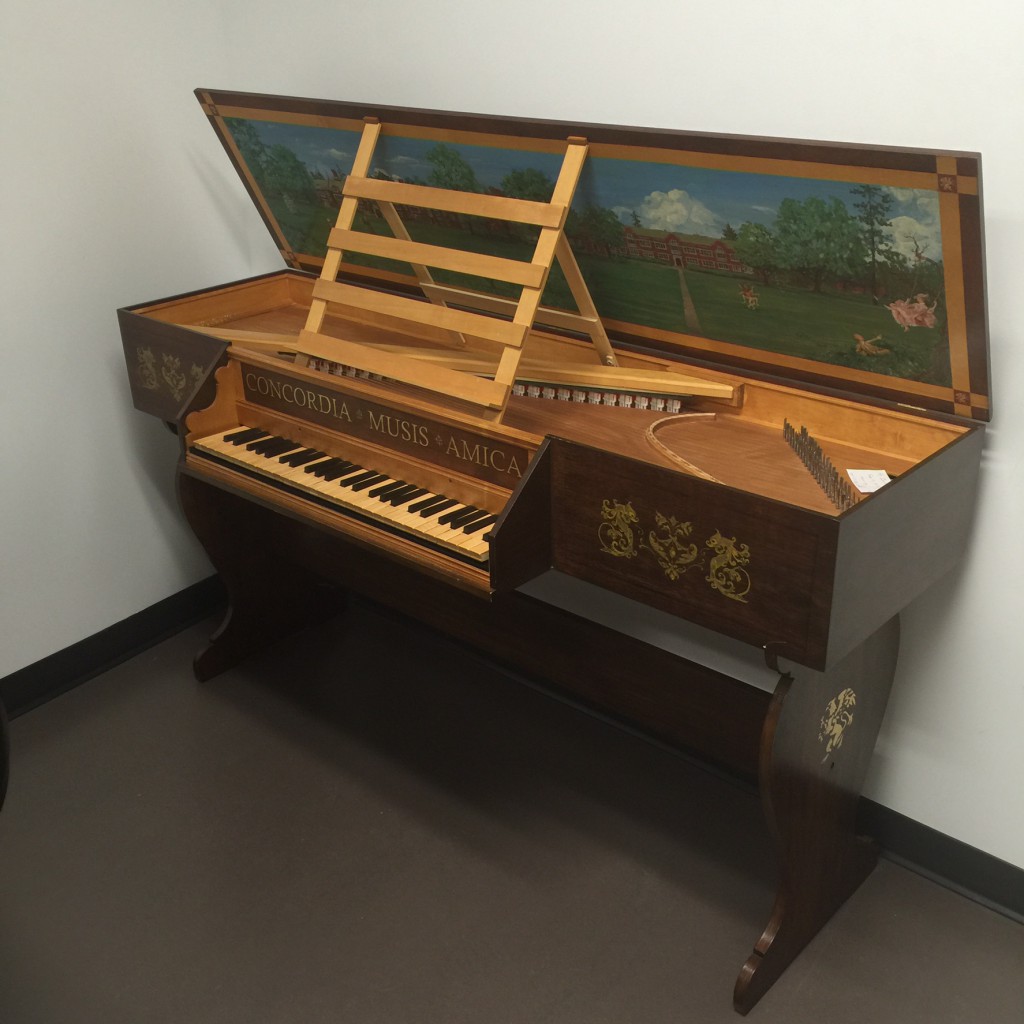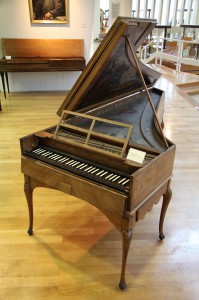I’ve been very busy lately and haven’t written here much. My wife and I had our third child join us at the end of May and we’ve been very busy ever since!
I’ve run into a lot of interesting and odd instruments over the summer, so I thought I’d share some pictures of some of them here.
First, I’ve been working hard on a harpsichord that I bought this summer and got into my teaching studio. My alma mater, George Fox University wasn’t using their instrument and they gave it to me for a very good price! I worked on this instrument while I was in college, but it has been very gratifying to have more time to get it playing really well. I have also been experimenting with historical tunings, specifically the Lehman-Bach tuning which sounds awesome on the harpsichord.
The week after I picked up my harpsichord, another harpsichord came into Portland Piano Company and I’ve been working at getting it back into shape. It was extremely dirty, and I found that cleaning the delicate harpsichord is much more time consuming than cleaning a modern piano! One of the two courses of strings had no tension on it at all, so it has taken a lot of tunings to get it stabilized.
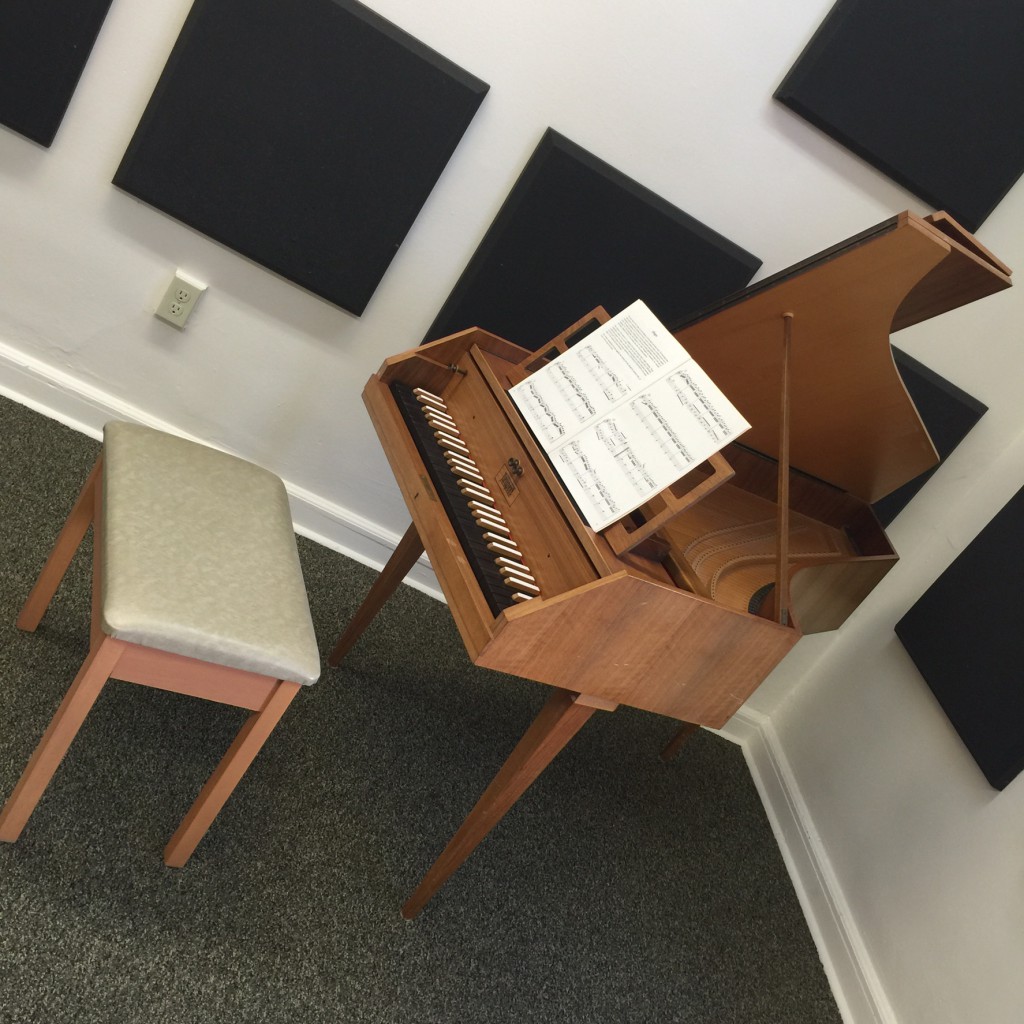 I got to tune an interesting Grotrian piano from the 1950’s again this summer. I’ve worked on these pianos before, but I always enjoy coming across them.
I got to tune an interesting Grotrian piano from the 1950’s again this summer. I’ve worked on these pianos before, but I always enjoy coming across them.
I’ve been tuning at Reed College all week and they have 3 harpsichords along with around 25 pianos in their music building. I just tuned a vintage Bosendorfer there this week:
This little harpsichord was very entertaining. Harpsichords were often custom painted for the owners, inside and out. This tiny instrument has a painting of Reed College buildings inside the lid with “The Swing” in one corner and tonsured monks playing Frisbee in the other corner!
Those are some of the interesting instruments I’ve run into this summer. I hope you enjoyed those pictures and have a good remainder of your summer. I hard at work getting school pianos in shape before school starts again in a couple weeks!





